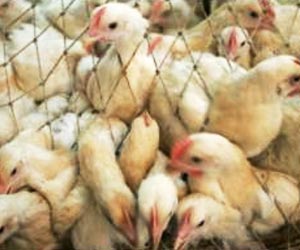According to South Korean health officials on Thursday, authorities battling the country's worst outbreak among poultry, intend building a factory to produce human bird flu vaccine.
According to South Korean health officials on Thursday, authorities battling the country's worst outbreak among poultry, intend building a factory to produce human bird flu vaccine.
The factory will produce enough vaccine to treat 20 million people a year and will be built next year at Hwasun, 270 kilometres (160 miles) south of Seoul, the health ministry said in a report to parliament.It also promised to secure enough stocks of the antiviral flu medicine Tamiflu to treat 10 million people by 2012.
The factory at Hwasun will be operated by local pharmaceutical firm Green Cross, which has been developing its own vaccine.
"Our vaccine still requires further clinical tests. We are trying hard to produce it at the factory at an early date," a Green Cross spokesman told AFP.
US authorities approved the first human vaccine, made by the French firm Sanofi Aventis, only in April 2007.
South Korea has culled more than 6.8 million chickens since its latest outbreak began on April 1. The ministry has reported 42 cases of bird flu at 33 places nationwide since then.
Advertisement
No human infections have been confirmed in South Korea even though the H5N1 virus has killed more than 240 people worldwide since late 2003.
Advertisement
The agriculture ministry is restricting the distribution and sale of live poultry for human consumption. It has already banned the butchering of chickens and other poultry at traditional markets.
In the country's 2003-2004 outbreak, 5.28 million birds were culled while a 2006-2007 outbreak resulted in 2.8 million birds being destroyed.
Source-AFP
THK/M








